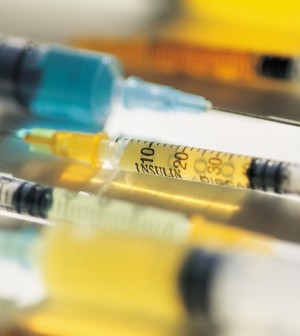Don't Miss
- See What Saffron Can Do for Sleep and Heart Health
- 6 Common Mistakes to Avoid Before Your Physical
- Can Sweating Really Help You Beat a Cold?
- Strengthening Your Relationship: Practical Strategies
- Skip Storing This Everyday Product in the Fridge Door
- Green Tea + B3 Pairing May Boost Brain Health
- Navigating Your Midlife Crisis: Embracing New Possibilities
- City Raccoons Showing Signs of Domestication
- Mapping the Exposome: Science Broadens Focus to Environmental Disease Triggers
- One Week Less on Social Media Linked to Better Mental Health
Health Tip: Choosing a Food Thermometer
By LadyLively on October 15, 2013


Food thermometers are essential tools to help you cook food to the proper temperature, reducing your risk of foodborne illness.
The Academy of Nutrition and Dietetics offers information about the different types of food thermometers:
- An oven-safe dial thermometer gives a reading within a minute or two when inserted about two inches into food. It’s inserted at the start of cooking, and is best for deep casseroles or thicker meats, rather than thin dishes.
- An instant-read digital thermometer gives a reading in about 10 seconds, but isn’t designed to be used while foods are cooking.
- An instant-read dial thermometer gives a reading within 20 seconds and is most appropriate for deep dishes. It isn’t meant to be used during the entire cooking cycle.
- A pop-up internal thermometer often is inserted by the poultry producer, popping up when the food reaches the appropriate temperature.
- A fork/thermometer combination tool is useful for grilling. It should be inserted at least 1/4-inch into meat, and will give a reading in less than 10 seconds.
Source: HealthDay
Copyright © 2025 HealthDay. All rights reserved.










